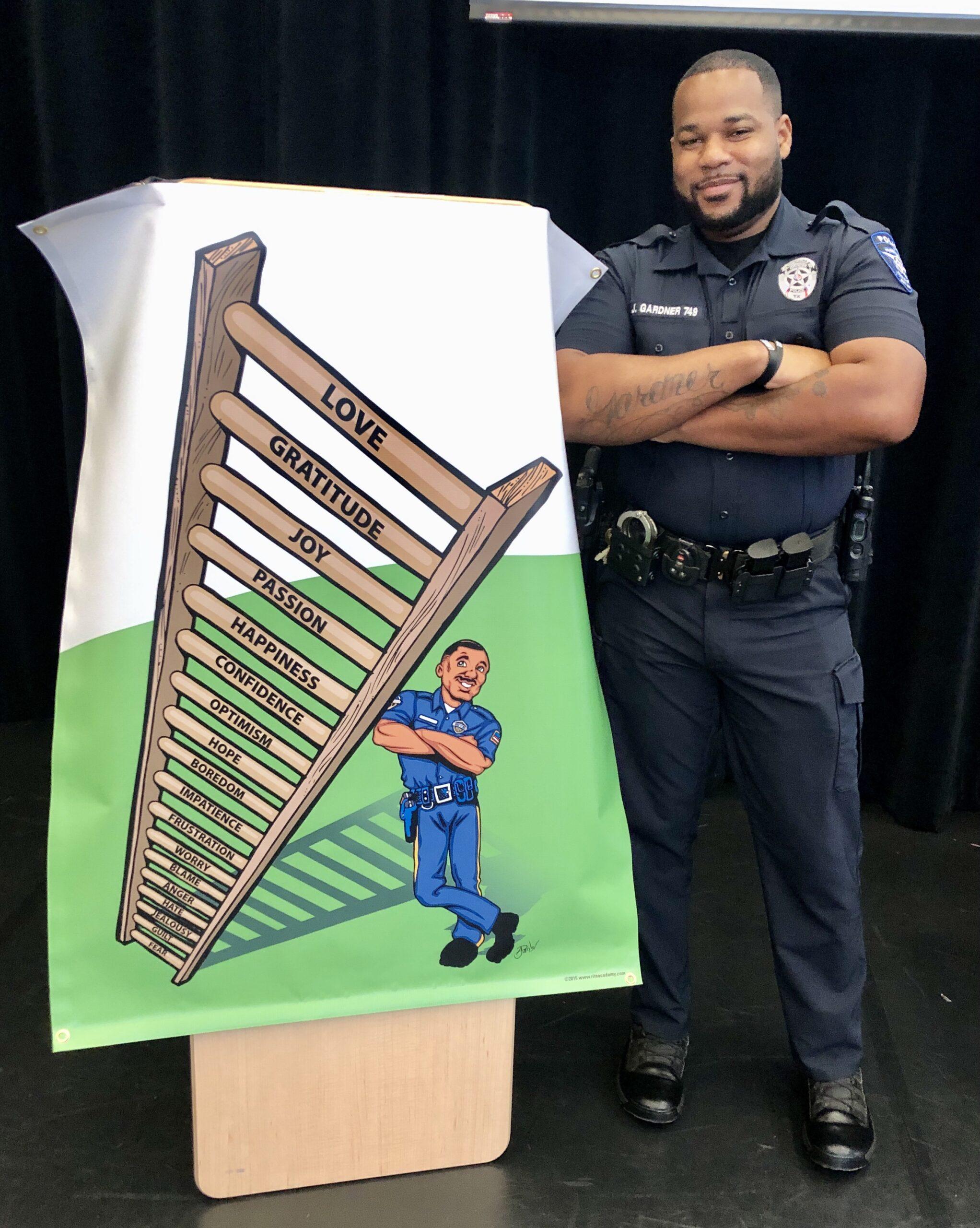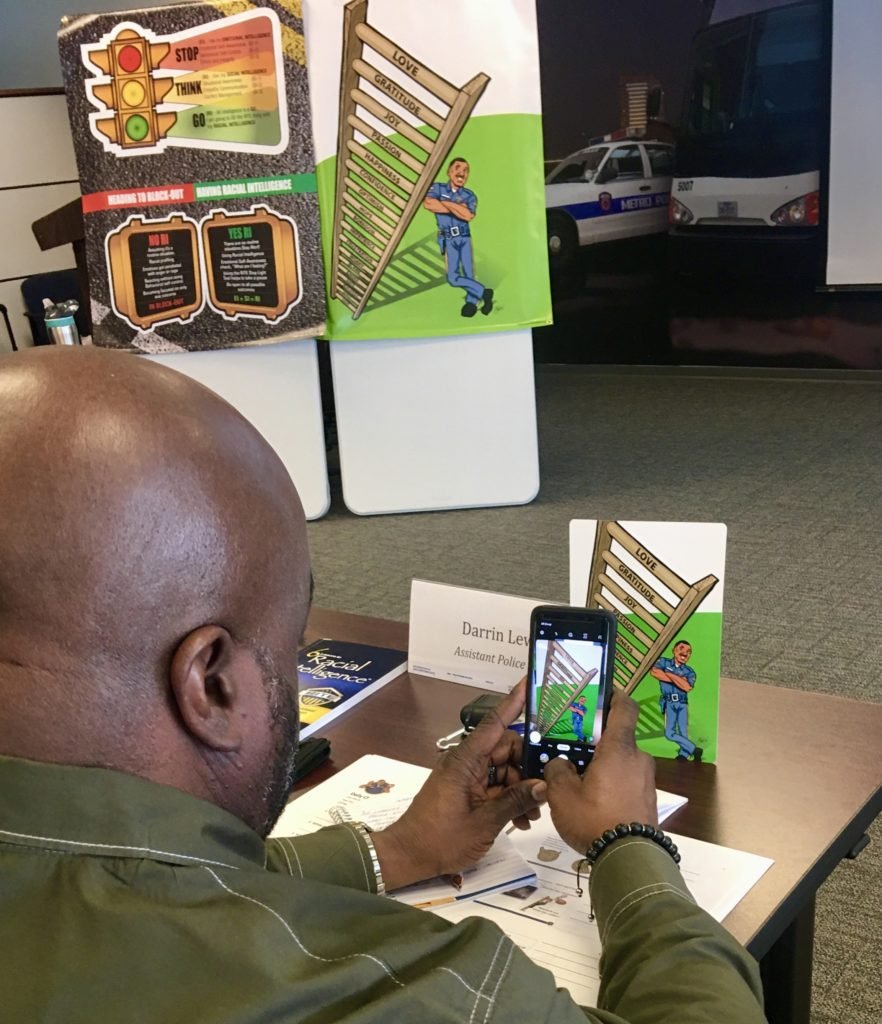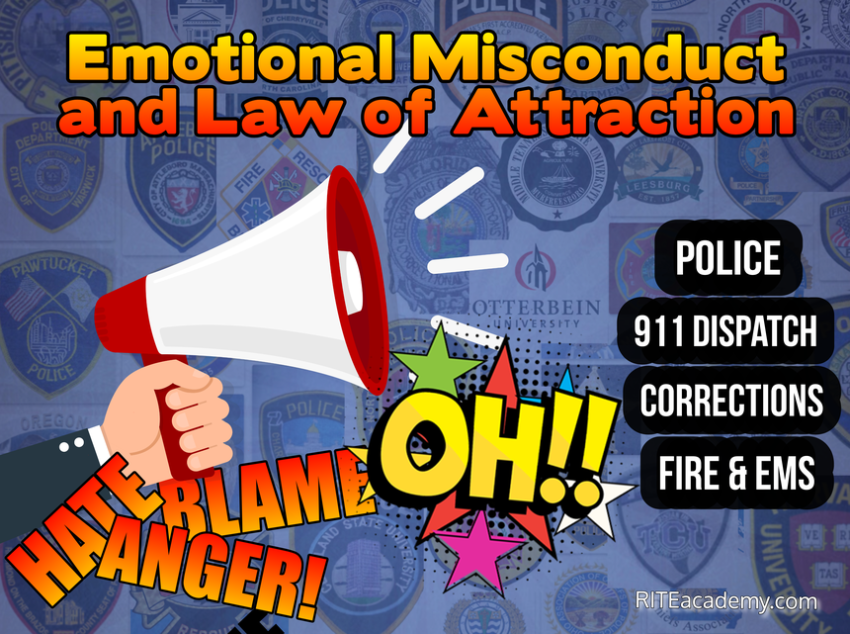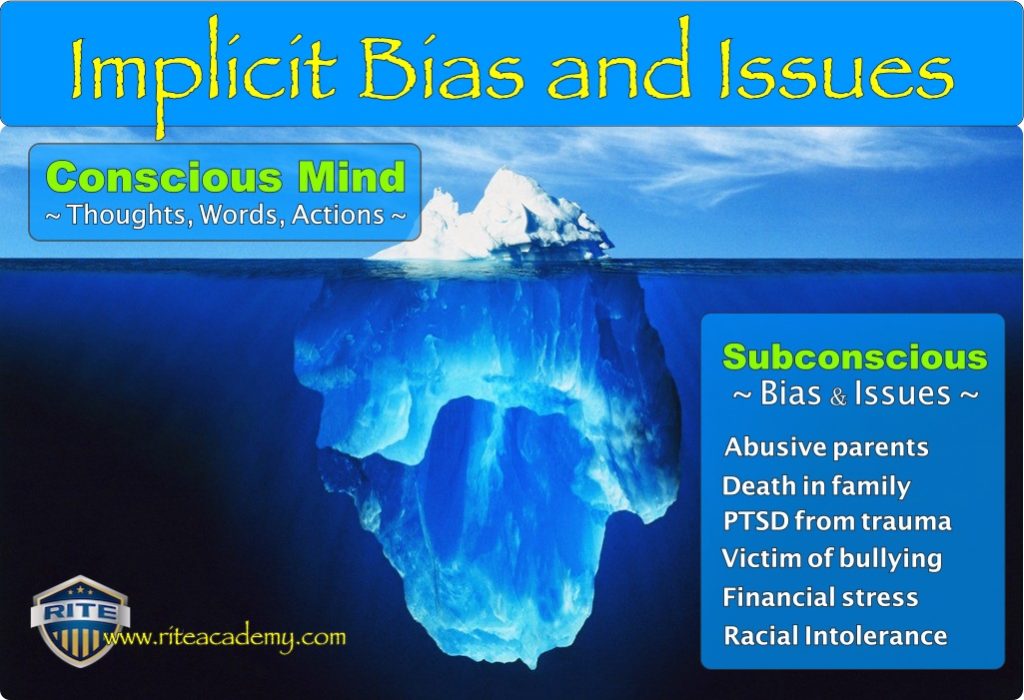After agencies payout big settlements, they often wake up and realize they need to make major policy changes. But… where does it really start?
Every agency is responsible for taking care of its own house. Sure, it’s easy to BLAME the system, or lack of personnel, or recruiting issues. But until an agency acts on its own internal naysayers and toxic employees, nothing will change.
The old saying holds true, “ “People don’t leave departments; they leave because of the toxic environment in the department.”
Emotional Misconduct starts when employees:
- Over-react in pressure situations
- Are unaware of their Hot Buttons
- Can’t control their emotions
Just one toxic employee can bring down morale. Issues can be:
- Expresses negative banter
- Spreads rumors and gossip
- Self-serving against departmental policy
- Block-Out Syndrome – only sees what they believe
- Unprofessional social media posting
These lessons can hold officers accountable for their actions… on the street and inside the agency.
1. The Law of Attraction in Action
The Law of Attraction states like attracts like. Whatever you give your emotional energy and attention to, is what comes back to you. Although you may have never heard of the law of attraction, the concept is not new. LOA ideas date back to the early 19th-century and was known as “New Thought.”
When an agency embraces the LOA concept, it improves Officer Well-being, reduces Implicit bias, and addresses Misconduct.
Law of Attraction in SPORTS
I learned as a young athlete, what I think connects to an energy that brings that energy back to me (good and bad). When we think, feel, and act with CONFIDENCE, we attract confidence. When we feel strong, we attract more strength.
Thinking with an athletic attitude of self-belief, all of your goals become clearer.
Law of Attraction in POLICING

When we teach the Law of Attraction in its simplest form of like attracts like, the LADDER brings “an aha” to everyone in class. For the most part, people with similar energy attract each other.
In policing, every moment counts!
Good cops control their emotions, toxic cops escalate them.
The RITE Awareness Ladder teaches employees how to control their emotions.
RITE Ladder IN ACTION
Positive thought and emotions, attracts positive things or experiences. The reverse is also true with negative thoughts and emotions, attracting negative things.. Actions have good and bad consequences… Awareness is Key! Where do you spend most of your day?
- Towards the Top of the Ladder (Love, Gratitude, Joy)
- Towards the Bottom of the Ladder (Hate, Anger, Blame)

The Ladder helps us know where we are during our day. Start to notice where you spend MOST of your day… towards the TOP or towards the BOTTOM?
Remember, you get back what energy and thoughts you’re repeating.
If your constant thought pattern is ANGER, that energy of anger will manifest the same results back to you… until you change your thought.
When you hang out with toxic people, you become toxic in your thinking!
2. Law of Attraction and Misconduct
Misconduct causes lawsuits that could have been avoided. Agencies that focus on Emotional Intelligence (like Law of Attraction) increase their Officer’s awareness and interactions with others. You can start by just looking to see if you are around more positive or negative people.
Training your employees on emotional intelligence, and how to use it when addressing the public is key to reducing use of force. Using accountability Tools like the Emotional Intelligence Ladder makes it simple.
We teach in every class using the Ladder, “When you control your emotions, you control the situation.”
It takes just ONE employee to get caught in a bad mental loop, (low Emotional Intelligence) and then they address the Community (Social Intelligence) … the interaction can cause misconduct. Most misconduct is caused when an officer over-reacts to the situation and unnecessarily escalates the call, causing someone to get hurt. This is where lawsuits get filed.
3. Law of Attraction Accountability Ladder
Police Leaders know the importance of Tactical, De-escalation, and Implicit bias training. But…

Emotional Accountability Tools (the Ladder) helps employees control their emotions, especially in pressure situations.
As police executives in a litigated case of misconduct, RITE Training says,
“Our agency gave every employee EI Accountability Tools to control their emotions, and that misconduct was not condoned at this agency.”
Failure to give employees the communication training and tools they need, results in lawsuits that could be avoided. Taking a blind eye, knowing there are toxic employees inside the agency, doesn’t hold up in court these days.
Professional Workplace Training using the RITE accountability Tools help all employees who may be in a bad space and need help. Contact us below for more information.
RITE Academy Stats – Contact Form
- Trained over 1200 agencies on Officer Well-being
- Created over 950 RITE train-the-trainers
- Gave out more than 550,000 RITE Tools for employees
- Provided hundreds of newsletters for agency employees
- Helped agencies reduce use-of-force incidents by 65%
When we can help just ONE Officer not use unnecessary use of force, or just ONE Agency from a big lawsuit… we can say we’ve done our job.
Police misconduct settlements could have been avoided. Let’s improve Emotional misconduct and accountability.
City of Brooklyn Center paid $3.25 million to Daunte Wright’s family, who was killed by officer Kim Potter during a traffic stop.
Potter initially detained Wright for an expired tag and an illegal air freshener and later found out that he had an outstanding warrant. Potter, who had a trainee with her, then proceeded to shoot and kill Wright after alleging she mistook her gun for a taser.
The settlement also requires new policies and procedures for Brooklyn Center Police Officers, including trainings that focus on implicit bias, weapons confusion, de-escalation, and how to navigate mental health crises.
David Bond filed a federal lawsuit against the (LAPD), alleging that they violated his civil rights and used excessive force against him. Settlement $300,000
In 2020, David Bond was shot and injured by a police projectile during a protest in response to the murder of George Floyd. Bond claims that he had been peacefully protesting and following orders from officers, but still had to use a tennis racket and a salad bowl as shields against the projectiles.
This lawsuit was one of many filed against the LAPD, which has spurred reforms such as training in the use of these kinds of projectiles.
In April 2022, after an investigation of the Springfield Police Department’s narcotics bureau by the U.S. Department of Justice, the Springfield Police Department agreed to implement several reforms.
The investigation found that officers in the narcotics bureau often used excessive force, regularly violated individual’s Fourth Amendment rights, and often failed to report these incidents or reported them inaccurately.
The new reforms will include de-escalation training, new reporting mechanisms for instances of force, and installing a separate, independent monitor to oversee compliance with these changes.
Agencies that ignore excessive use of force, fail to file bad patterns of abuse of police power.
Gwinnett County officials agreed to pay $400,000 to Demetrius Hollins, a Black man who was assaulted by two white Gwinnett County officers during a traffic stop in 2017.
After pulling Hollins over for an alleged license plate issue, Sgt. Michael Bongiovanni and Officer Robert McDonald punched Hollins in the face and stomped on his head, despite him putting his hands up. Both officers were later fired and indicted for assault by a grand jury – Bongiovanni pled no contest to aggravated assault and McDonald was found guilty by the jury.
Hollins filed a lawsuit, settled by the Gwinnett County Commission for $400,000 in January 2022, that alleged that the County’s police leaders had ignored the officers’ pattern of excessive force and falsified reports.
In 2021, Melissa Fields filed a lawsuit against Roane County Sheriff’s Deputy Mike King after the fatal shooting of her father, Michael Nichols. Settlement $585,000.
In 2020, King came to Nichols’ front porch and claimed that Nichols had been ignoring his orders and that he had reached for a gun, which was actually a decorative BB gun. In her lawsuit, Fields notes that the BB gun “was used as a decorative spindle in the porch railing” and alleges that King had been to Nichols’ property before and should have known that. King shot Nichols three times.
King was not wearing a body camera despite the County’s policy requiring it, and he was not indicted for this shooting. As of April 2022, King was still employed by the County and was one of their highest paid sheriffs.
In February 2022, the Greensboro City Council reached a $2.57 million settlement agreement with the family of Marcus Deon Smith, a 38-year-old man killed by police in 2018.
Marcus Deon Smith was homeless and asked officers to take him to the hospital. While waiting for EMTs to arrive, eight officers threw Smith to the ground and “hogtied him” – restraining both his arms and legs and then binding them together.
Smith was unable to breathe, cried out for help, and died shortly after. Smith’s family filed a lawsuit, leading to the $2.57 million settlement. City records later revealed that seven of the eight officers involved in Smith’s case would later receive merit pay increases.
The City of Palo Alto, CA paid $135,000 to settle a lawsuit involving a man who was attacked by a police dog while sleeping in his family’s backyard.
In June 2020, Joel Alejo was sleeping in his family’s backyard in Palo Alto when an officer, Agent Nick Enberg, ordered his police dog to bite Alejo during the police’s search for a kidnapping suspect. Alejo was subsequently taken to the hospital because of his injuries. In January 2022, the City settled Alejo’s case for $135,000, yet Enberg remained on the force with a police dog as of September 2022, more than two years after the incident.
This was the fifth police misconduct lawsuit that Palo Alto settled between February 2016 and January 2022. Including Alejo’s case, these lawsuits have cost the City $1,282,500.
Might be worth including from the article that: “It’s the fifth lawsuit related to police misconduct that Palo Alto has settled since February 2016, amounting to $1,282,500 including the Alejo case.”
Read and share



